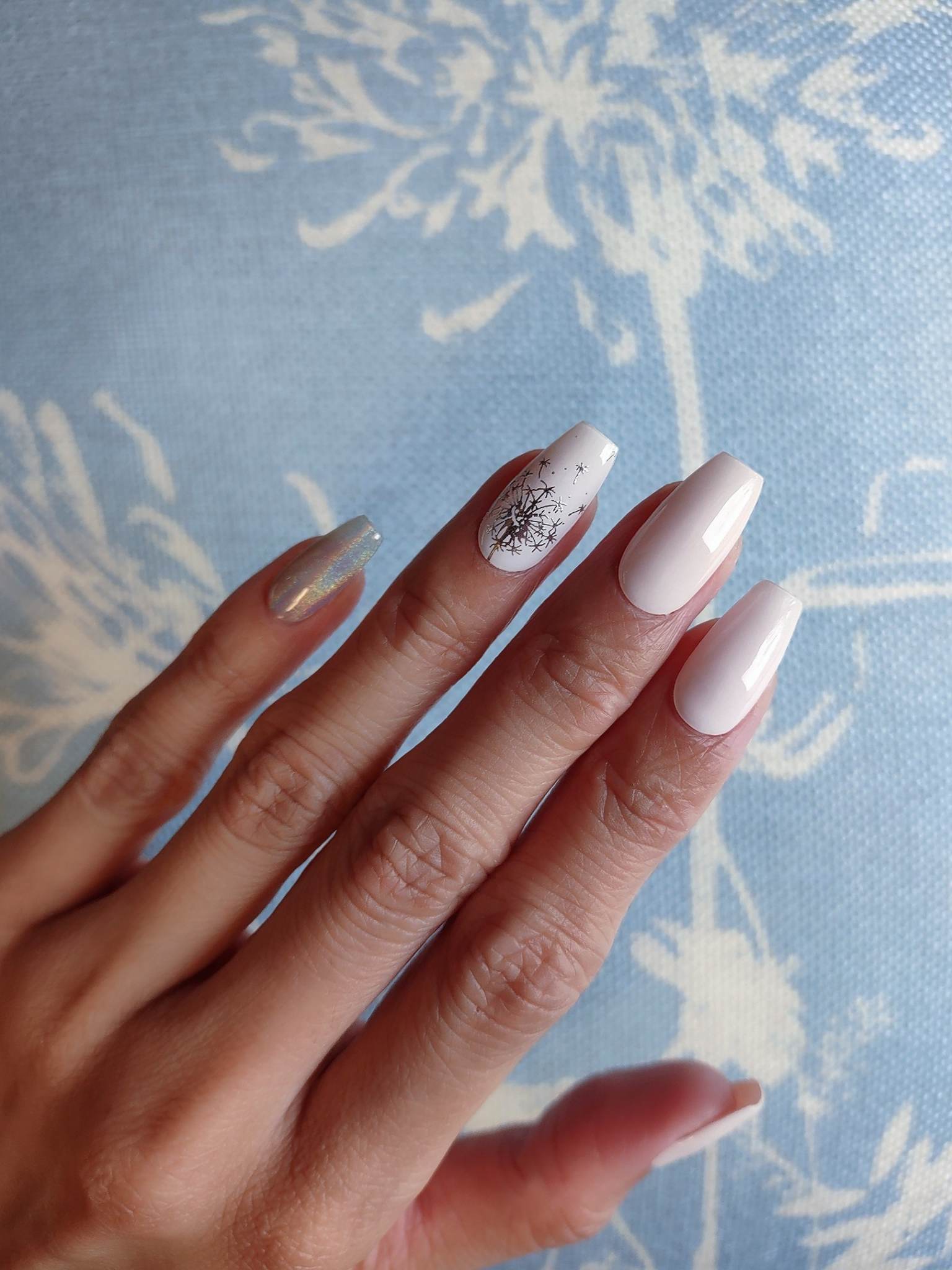Introduction:
Our nails are more than just a canvas for the latest manicure trends. They can be windows into our overall health, often reflecting what's happening inside our bodies. Chronic diseases, in particular, can leave their mark on our nails in surprising ways. In this post, we'll explore how various chronic conditions can affect nail health and what these changes might mean for you.
Understanding Chronic Diseases:
Chronic diseases are long-lasting conditions that typically progress slowly over time. According to the Centers for Disease Control and Prevention (CDC), six in ten adults in the United States have a chronic disease, with four in ten having two or more [1]. Some common types include:
1. Cardiovascular diseases
2. Diabetes
3. Respiratory diseases
4. Autoimmune disorders
5. Liver and kidney diseases
How Chronic Diseases Affect Nail Health:
1. Diabetes and Nail Health:
Diabetes can significantly impact nail health. The American Diabetes Association notes that people with diabetes are more prone to fungal nail infections and slow nail growth [2]. You might notice:
- Yellowish discoloration of nails
- Thickening of the nail plate
- Increased brittleness and breakage
2. Psoriasis and Nail Changes:
Psoriasis, an autoimmune condition, doesn't just affect the skin. The National Psoriasis Foundation reports that up to 50% of people with psoriasis experience nail changes [3]. These can include:
- Pitting or dents in the nails
- Separation of the nail from the nail bed (onycholysis)
- Discoloration, often described as an "oil drop" under the nail
3. Cardiovascular Diseases and Nail Symptoms:
Heart and circulatory problems can manifest in your nails. The American Heart Association highlights that certain nail changes can indicate poor circulation [4]:
- Pale nail beds
- Slow capillary refill when pressing on nails
- Clubbing of fingernails in advanced heart or lung disease
4. Respiratory Diseases and Nail Clubbing:
Chronic respiratory conditions like COPD can cause a distinct nail change known as clubbing. The British Lung Foundation describes this as a softening of the nail bed and widening of the fingertips [5].
5. Liver and Kidney Diseases:
These conditions can cause various nail abnormalities. The American Liver Foundation notes that liver disease can lead to:
- Terry's nails (mostly white with a dark band at the tip)
- Muehrcke's lines (horizontal white lines) [6]
Kidney disease can cause:
- Half-and-half nails (proximal half white, distal half red-brown)
- Absence of lunula (the white crescent at the base of the nail)
The Importance of Nail Care in Chronic Disease Management:
While nail changes can be distressing, proper nail care can help manage symptoms and prevent complications. The American Academy of Dermatology recommends:
- Keeping nails clean and dry
- Trimming nails regularly
- Moisturizing nails and cuticles
- Avoiding harsh nail products [7]
Conclusion:
Your nails can be valuable indicators of your overall health, especially when it comes to chronic diseases. While nail changes alone aren't diagnostic, they can be important clues that warrant further investigation. If you notice persistent nail abnormalities, it's always best to consult with a healthcare professional.
Remember, healthy nails often start with a healthy body. Managing chronic conditions through proper medical care, a balanced diet, and a healthy lifestyle can go a long way in maintaining not just your overall health, but also the health and appearance of your nails.
References:
[1] Centers for Disease Control and Prevention. (2021). Chronic Diseases in America. https://www.cdc.gov/chronicdisease/resources/infographic/chronic-diseases.htm
[2] American Diabetes Association. (2021). Skin Complications. https://www.diabetes.org/diabetes/complications/skin-complications
[3] National Psoriasis Foundation. (2021). Hands, Feet and Nails. https://www.psoriasis.org/hands-feet-nails/
[4] American Heart Association. (2021). Warning Signs of Heart Failure. https://www.heart.org/en/health-topics/heart-failure/warning-signs-of-heart-failure
[5] British Lung Foundation. (2021). Clubbing of the fingers or toes. https://www.blf.org.uk/support-for-you/signs-of-lung-disease/clubbing-of-the-fingers-or-toes
[6] American Liver Foundation. (2021). The Progression of Liver Disease. https://liverfoundation.org/for-patients/about-the-liver/the-progression-of-liver-disease/
[7] American Academy of Dermatology. (2021). Nail care basics. https://www.aad.org/public/everyday-care/nail-care-secrets/basics/nail-care-tips
Our nails are more than just a canvas for the latest manicure trends. They can be windows into our overall health, often reflecting what's happening inside our bodies. Chronic diseases, in particular, can leave their mark on our nails in surprising ways. In this post, we'll explore how various chronic conditions can affect nail health and what these changes might mean for you.
Understanding Chronic Diseases:
Chronic diseases are long-lasting conditions that typically progress slowly over time. According to the Centers for Disease Control and Prevention (CDC), six in ten adults in the United States have a chronic disease, with four in ten having two or more [1]. Some common types include:
1. Cardiovascular diseases
2. Diabetes
3. Respiratory diseases
4. Autoimmune disorders
5. Liver and kidney diseases
How Chronic Diseases Affect Nail Health:
1. Diabetes and Nail Health:
Diabetes can significantly impact nail health. The American Diabetes Association notes that people with diabetes are more prone to fungal nail infections and slow nail growth [2]. You might notice:
- Yellowish discoloration of nails
- Thickening of the nail plate
- Increased brittleness and breakage
2. Psoriasis and Nail Changes:
Psoriasis, an autoimmune condition, doesn't just affect the skin. The National Psoriasis Foundation reports that up to 50% of people with psoriasis experience nail changes [3]. These can include:
- Pitting or dents in the nails
- Separation of the nail from the nail bed (onycholysis)
- Discoloration, often described as an "oil drop" under the nail
3. Cardiovascular Diseases and Nail Symptoms:
Heart and circulatory problems can manifest in your nails. The American Heart Association highlights that certain nail changes can indicate poor circulation [4]:
- Pale nail beds
- Slow capillary refill when pressing on nails
- Clubbing of fingernails in advanced heart or lung disease
4. Respiratory Diseases and Nail Clubbing:
Chronic respiratory conditions like COPD can cause a distinct nail change known as clubbing. The British Lung Foundation describes this as a softening of the nail bed and widening of the fingertips [5].
5. Liver and Kidney Diseases:
These conditions can cause various nail abnormalities. The American Liver Foundation notes that liver disease can lead to:
- Terry's nails (mostly white with a dark band at the tip)
- Muehrcke's lines (horizontal white lines) [6]
Kidney disease can cause:
- Half-and-half nails (proximal half white, distal half red-brown)
- Absence of lunula (the white crescent at the base of the nail)
The Importance of Nail Care in Chronic Disease Management:
While nail changes can be distressing, proper nail care can help manage symptoms and prevent complications. The American Academy of Dermatology recommends:
- Keeping nails clean and dry
- Trimming nails regularly
- Moisturizing nails and cuticles
- Avoiding harsh nail products [7]
Conclusion:
Your nails can be valuable indicators of your overall health, especially when it comes to chronic diseases. While nail changes alone aren't diagnostic, they can be important clues that warrant further investigation. If you notice persistent nail abnormalities, it's always best to consult with a healthcare professional.
Remember, healthy nails often start with a healthy body. Managing chronic conditions through proper medical care, a balanced diet, and a healthy lifestyle can go a long way in maintaining not just your overall health, but also the health and appearance of your nails.
References:
[1] Centers for Disease Control and Prevention. (2021). Chronic Diseases in America. https://www.cdc.gov/chronicdisease/resources/infographic/chronic-diseases.htm
[2] American Diabetes Association. (2021). Skin Complications. https://www.diabetes.org/diabetes/complications/skin-complications
[3] National Psoriasis Foundation. (2021). Hands, Feet and Nails. https://www.psoriasis.org/hands-feet-nails/
[4] American Heart Association. (2021). Warning Signs of Heart Failure. https://www.heart.org/en/health-topics/heart-failure/warning-signs-of-heart-failure
[5] British Lung Foundation. (2021). Clubbing of the fingers or toes. https://www.blf.org.uk/support-for-you/signs-of-lung-disease/clubbing-of-the-fingers-or-toes
[6] American Liver Foundation. (2021). The Progression of Liver Disease. https://liverfoundation.org/for-patients/about-the-liver/the-progression-of-liver-disease/
[7] American Academy of Dermatology. (2021). Nail care basics. https://www.aad.org/public/everyday-care/nail-care-secrets/basics/nail-care-tips






